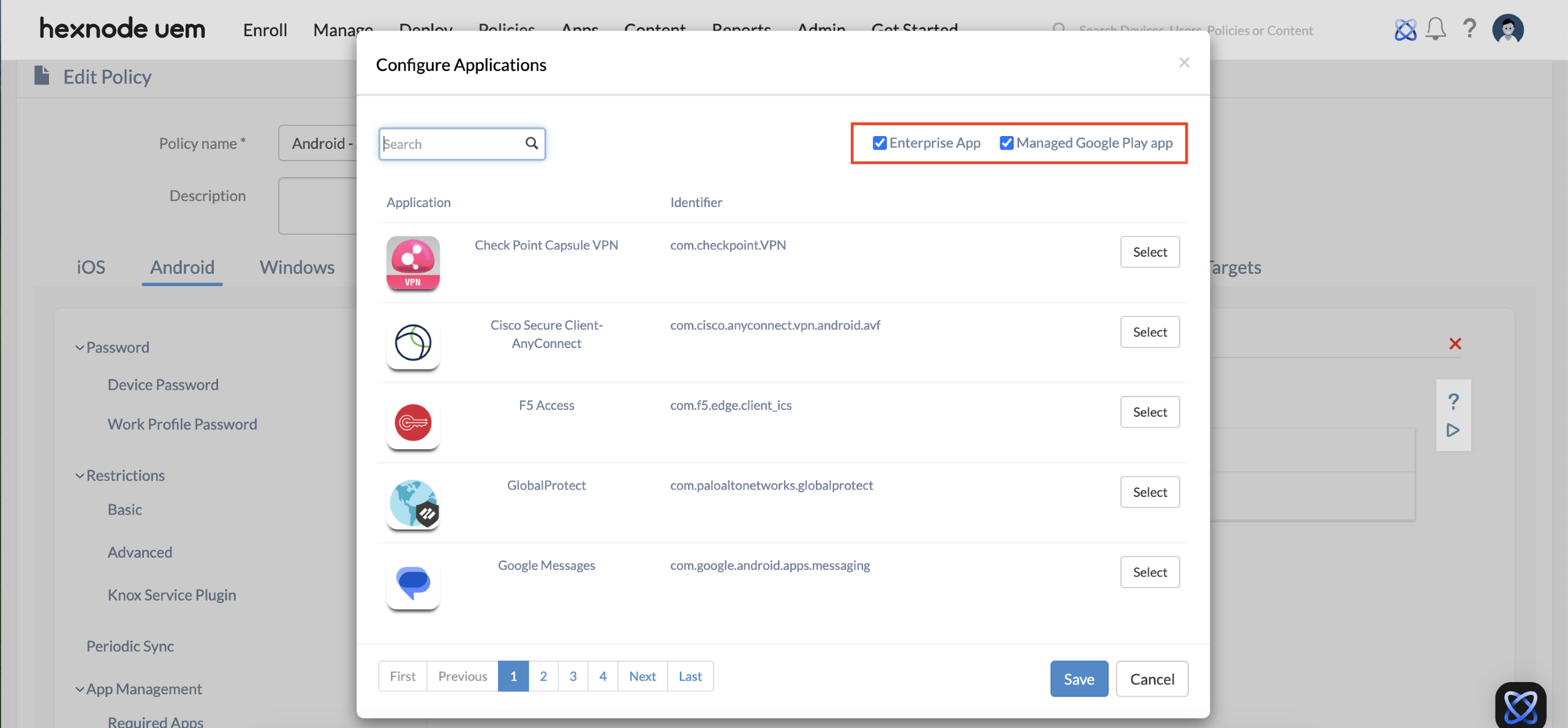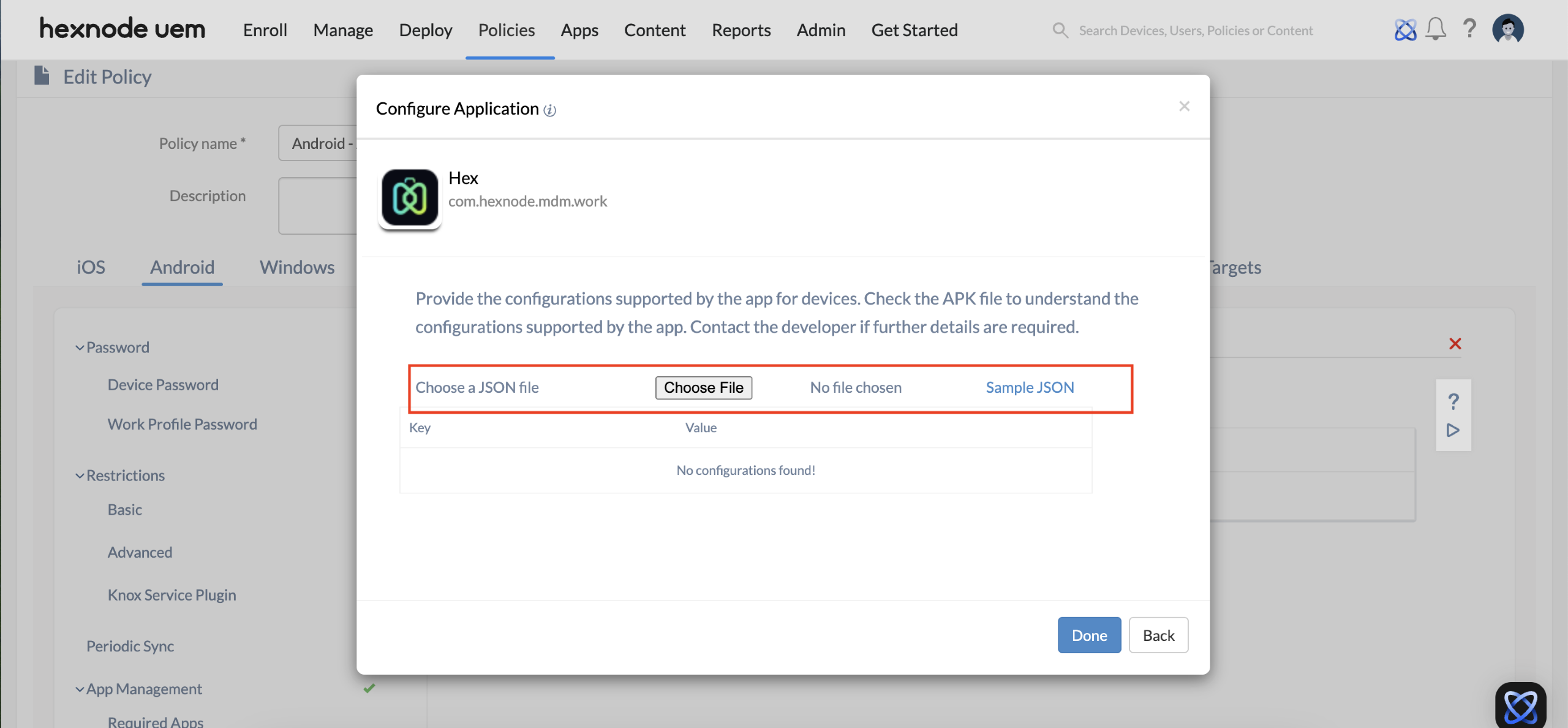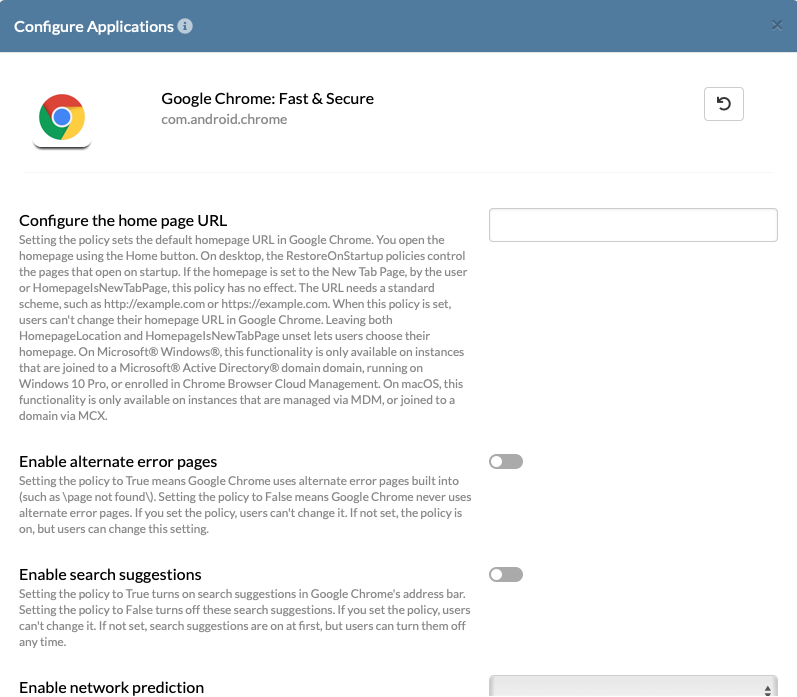Category filter
How to set up permissions and configurations for an app?
With Hexnode UEM, you can configure app configurations and app permissions for your managed applications deployed on your enterprise devices. The app configuration feature for Android allows you to remotely pre-configure the work app settings for different users. The app permission feature will enable you to allow or deny the permissions required by work apps and enterprise apps on a device.
Setting up app configurations
To set up app configurations,
- Go to the Policies tab on your Hexnode portal.
- Create a new policy or select an existing policy.
- From Android → App Management, select App Configurations.
- Click on Configure and + Add new configuration button to select a work app and configure it.
- Select Enterprise App or Managed Google Play app, depending on the type of app you want to configure.
- (Optional) Use the search bar to search for work apps.
- Click on the Select button to choose the app to configure.
- The app configuration screen is displayed. Configure the available options and hit Done. For enterprise apps, you can configure additional settings by clicking on the Advanced settings option. Upload the JSON file with the required configurations and click Done.
- After configuring the app, click Save.
Different apps have different configurations, so it is not possible to list all of them here. However, we are trying to show you a few examples on how the configurations differ from app to app. We take Chrome Browser as the first example. The available configurations are:
- Account type for HTTP negotiate authentication
- Address or URL of proxy server
- Allow cookies on these sites
- Allow images on these sites
- Allow JavaScript on these sites
- Allow proceeding from the SSL warning page
- Allow access to a list of URLs
- Allow session only cookies on these sites
- Authentication server whitelist
- Block access to a list of URLs, and so on.
While Gmail shows varying configurations. Listing out some of them below.
- Default email signature
- Default sync window
- Device identifier
- Email address
- Hostname or host
Setting up app permissions
Set up what a specific app can do or have access to, even before they are installed on the device. The permissions may include location, network access, and camera, but are not limited to these three. App permissions differ between apps, but there might be common permissions for more than one app.
To set up permissions for an app,
- From your Hexnode portal, go to Policies.
- Create a new policy or select an existing policy.
- Select App Permissions from Android → App Management.
- Click on the + Add New App Permission button to select a work app and configure permissions.
- (Optional) Use the search bar to search for work apps.
- Click on the Select button to the right of an app.
- The app permission screen is displayed. Most of the restrictions contain three options to choose from – Default, Allow and Deny, which help you decide whether the app should follow the app defaults, or allow or deny a specific feature.
- Hit Done when you’re done with setting up permissions for an app.
Here are some of the restrictions for Dropbox.
- View network connections
- View Wi-Fi connections
- Take pictures and videos
- Find accounts on the device
- Full network access
- Add or remove accounts
- Run at startup
- Prevent device from sleeping
Set up targets for app configurations and permissions policies
If you haven’t saved the policy yet, you can
- Go to the Policy Targets tab within the policy.
- Click on + Add Devices.
- Search and select the devices to which the policy needs to be associated with and click on OK.
You can also associate policies to Device Groups, Users, User Groups or Domains from the left pane underneath the Policy Targets tab. - Save the policy to associate the policy to the device.
If you have saved the policy,
- From your Policies tab, check the policy.
- Select Associate Targets from Manage.
- Select the devices and click on Associate to get the policy associated with these devices.





